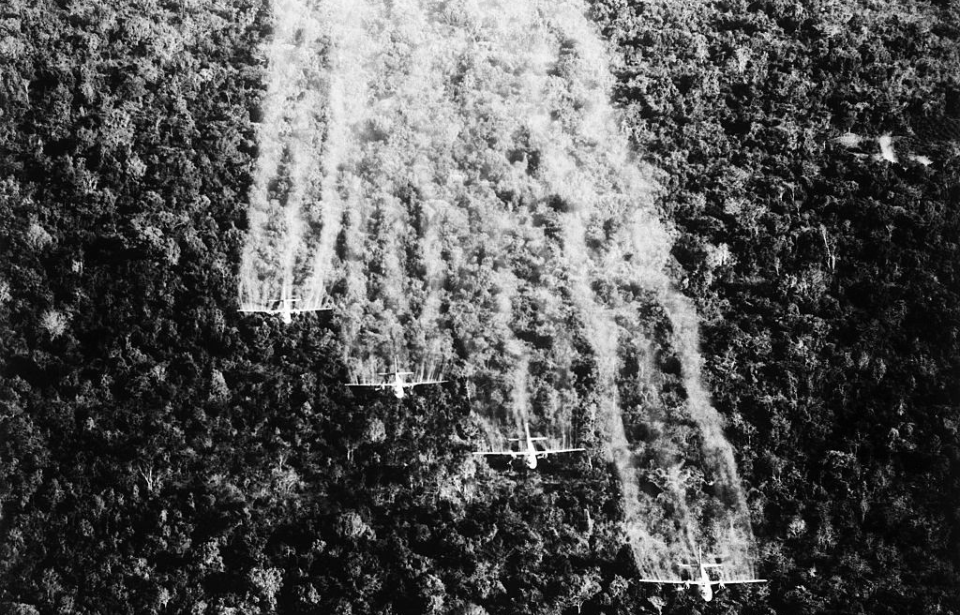The Vietnam War remains one of the most controversial chapters of modern history. Among its many devastating consequences, the use of chemical warfare, particularly Agent Orange, left an indelible mark on the landscape and the people of Vietnam with its far-reaching and unforeseen consequences.
Agent Orange was a mixture of two herbicides: 2,4-D and 2,4,5-T. Developed in the 1940s and ’50s, it was widely used during the conflict by the US military as part of Operation Ranch Hand, its herbicidal warfare program. The name came from the orange-striped barrels in which the chemicals were stored. The rationale behind its use was to eliminate dense vegetation in Vietnamese jungles and forests, thereby exposing the enemy’s hiding places and supply routes.
Between 1961-71, the US military sprayed approximately 20 million gallons of Agent Orange and other herbicides over large swaths of Cambodia, Laos and Vietnam. It was primarily deployed from specially-equipped helicopters or Fairchild C-123 Providers. The above photo, taken on September 30, 1965 over a jungle in Tan Son Nhut, South Vietnam, shows four of these aircraft spraying the substance over an enemy forest.
By the end of Operation Ranch Hand, the US Air Force had conducted around 20,000 spraying missions, leading to unintended, yet devastating consequences. Agent Orange was certainly effective at stripping away foliage, but it also contaminated water and soil, leaving long-lasting ecological scars. Entire ecosystems were disrupted, leading to a loss of biodiversity and disrupting the delicate balance of nature.
It also affected humans, too. Although the US government refutes this number, the Vietnamese government says that around 4.8 million citizens were exposed to Agent Orange, with the Red Cross of Vietnam stating that about a quarter of them have long-term health problems as a result. Numerous studies have linked exposure to an increased risk of cancer, birth defects and other chronic diseases, which can also be passed down through generations.
Unfortunately, the consequences of Agent Orange weren’t limited to the local population. Veterans who were exposed during their service were told it was completely harmless. However, many faced severe health issues years later; as with the Vietnamese, they saw higher rates of cancer, respiratory problems, and skin and digestive issues. There was also an increase of children born with birth defects.
Beginning as early as 1978, veterans initiated legal action against the manufacturers of Agent Orange, eventually leading to a settlement that provided compensation and medical benefits for some who were impacted by exposure. However, the legal battles for Vietnamese victims have been far more challenging, as the US government maintains it didn’t violate international law in deploying the herbicide.
More from us: The Freelance Photographer With the Amazing Mustache Who Survived Enemy Fire In Vietnam
Vietnam has largely taken matters into its own hands to help these victims. The country’s government has provided small amounts of monetary aid to over 200,000 victims of Agent Orange and assisted in setting up “peace villages,” where those needing help for conditions caused by the herbicide can go. American veterans have heavily supported this.
The Vietnam Red Cross also established numerous associations and funds to help these people.
